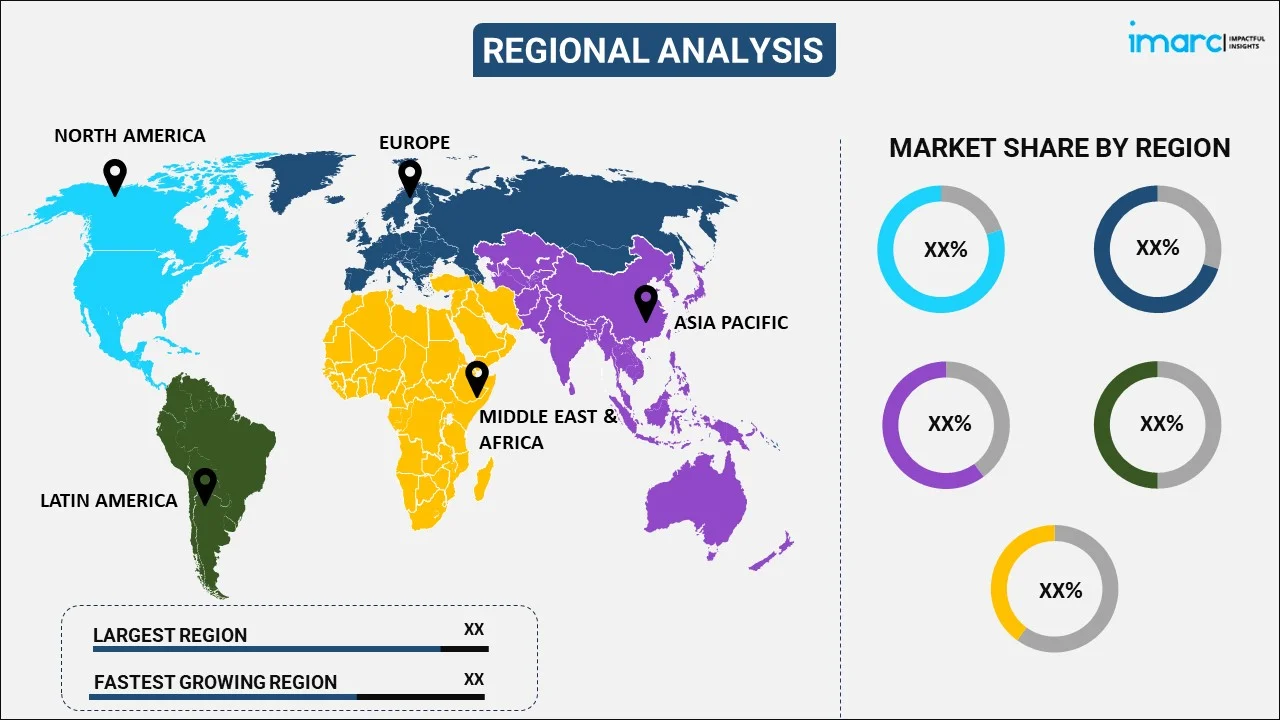
Waterborne Wood Coatings Market Report by Application (Furniture, Decking, Joinery, Siding, Flooring, and Others), and Region 2025-2033
Market Overview:
The global waterborne wood coatings market size reached USD 1.4 Billion in 2024. Looking forward, IMARC Group expects the market to reach USD 2.1 Billion by 2033, exhibiting a growth rate (CAGR) of 4.9% during 2025-2033.
|
Report Attribute
|
Key Statistics
|
|---|---|
|
Base Year
|
2024
|
|
Forecast Years
|
2025-2033
|
|
Historical Years
|
2019-2024
|
|
Market Size in 2024
|
USD 1.4 Billion |
|
Market Forecast in 2033
|
USD 2.1 Billion |
| Market Growth Rate (2025-2033) | 4.9% |
Wood coatings are generally created by combining various layers of shellac, drying oil, lacquer, varnish, etc. where every layer is followed by sanding. Whereas, on the contrary, waterborne wood coatings are made from a wide range of resins which include acrylic, polyester, polyurethane, fluoropolymer, waterborne powder, etc. Water is added in these coatings to enable the resin to get dispersed easily. These coatings are applied on the wood surface to protect and enhance its appearance. The high-water content of these coatings makes them easy to apply and environment-friendly as well. The consistency and the composition of the waterborne coatings vary and different solvents can be added to it. These coatings are often applied on furniture items such as tables, chairs, shelves, decorative wooden items, etc.
The market for waterborne wood coatings is currently exhibiting a continuous growth. Catalyzed by growing urbanization in emerging economies across the Asia Pacific, Latin America, and Eastern Europe, there has been a significant rise in the demand of waterborne wood coatings. Growing urbanization has triggered a rise in the residential, commercial, and industrial infrastructure, creating a positive impact on the demand of wooden products in these regions. Moreover, rising production of wooden artefacts and decorative items catalyzed by the growth of the global décor industry has also been driving the demand of these coatings. Additionally, waterborne wood coating offers numerous advantages compared to its substitutes. This includes robustness, stain resistance, corrosion resistance, flexibility, etc. Other factors driving the demand of waterborne wood coating include government regulations to reduce VOC (volatile organic compounds) emissions, product innovation, rising wood reuse, etc.
Key Market Segmentation:
IMARC Group provides an analysis of the key trends in each sub-segment of the global waterborne wood coatings market report, along with forecasts at the global and regional level from 2025-2033. Our report has categorized the market based on application.
Breakup by Application:
- Furniture
- Decking
- Joinery
- Siding
- Flooring
- Others
Based on the application, the market has been segmented into furniture, decking, joinery, siding, flooring and others. Joinery currently represents the biggest application.
Breakup by Region:

- Asia Pacific
- North America
- Europe
- Middle East and Africa
- Latin America
Region-wise, the market has been segmented into Asia Pacific, Europe, North America, Middle East and Africa, and Latin America. Amongst these, Asia Pacific is the biggest market, accounting for the majority of the global market.
Competitive Landscape:
The report has also analysed the competitive landscape of the market with some of the key players being BASF SE, Akzo Nobel Hilden GmbH, Axalta Coating Systems, LLC, Benjamin Moore & Co. (Berkshire Hathaway Inc.), Diamond Vogel, Helios TBLUS d.o.o (Kansai Paint Co.,Ltd.), PPG Industries Inc., Teknos Group Oy, The Dow Chemical Company and The Sherwin-Williams Company.
Report Scope:
| Report Features | Details |
|---|---|
| Base Year of the Analysis | 2024 |
| Historical Period | 2019-2024 |
| Forecast Period | 2025-2033 |
| Units | Billion USD |
| Segment Coverage | Application, Region |
| Region Covered | Asia Pacific, Europe, North America, Latin America, Middle East and Africa |
| Companies Covered | BASF SE, Akzo Nobel Hilden GmbH, Axalta Coating Systems, LLC, Benjamin Moore & Co. (Berkshire Hathaway Inc.), Diamond Vogel, Helios TBLUS d.o.o (Kansai Paint Co.,Ltd.), PPG Industries Inc., Teknos Group Oy, The Dow Chemical Company and The Sherwin-Williams Company |
| Customization Scope | 10% Free Customization |
| Post-Sale Analyst Support | 10-12 Weeks |
| Delivery Format | PDF and Excel through Email (We can also provide the editable version of the report in PPT/Word format on special request) |
Key Questions Answered in This Report
The waterborne wood coatings market was valued at USD 1.4 Billion in 2024.
We expect the global waterborne wood coatings market to exhibit a CAGR of 4.9% during 2025-2033.
The rising demand for waterborne coatings on furniture items, such as tables, chairs, shelves, decorative wooden items, etc., as they offer robustness, stain resistance, corrosion resistance, flexibility, etc., over their counterparts, is primarily driving the global waterborne wood coatings market.
The sudden outbreak of the COVID-19 pandemic had led to the implementation of stringent lockdown regulations across several nations, resulting in the temporary halt in numerous production activities for waterborne wood coatings.
Based on the application, the global waterborne wood coatings market can be bifurcated into furniture, decking, joinery, siding, flooring, and others. Currently, joinery holds the majority of the total market share.
On a regional level, the market has been classified into Asia Pacific, North America, Europe, Middle East and Africa, and Latin America, where Asia Pacific currently dominates the global market.
Need more help?
- Speak to our experienced analysts for insights on the current market scenarios.
- Include additional segments and countries to customize the report as per your requirement.
- Gain an unparalleled competitive advantage in your domain by understanding how to utilize the report and positively impacting your operations and revenue.
- For further assistance, please connect with our analysts.
 Inquire Before Buying
Inquire Before Buying
 Speak to an Analyst
Speak to an Analyst
 Request Brochure
Request Brochure
 Request Customization
Request Customization




.webp)




.webp)












